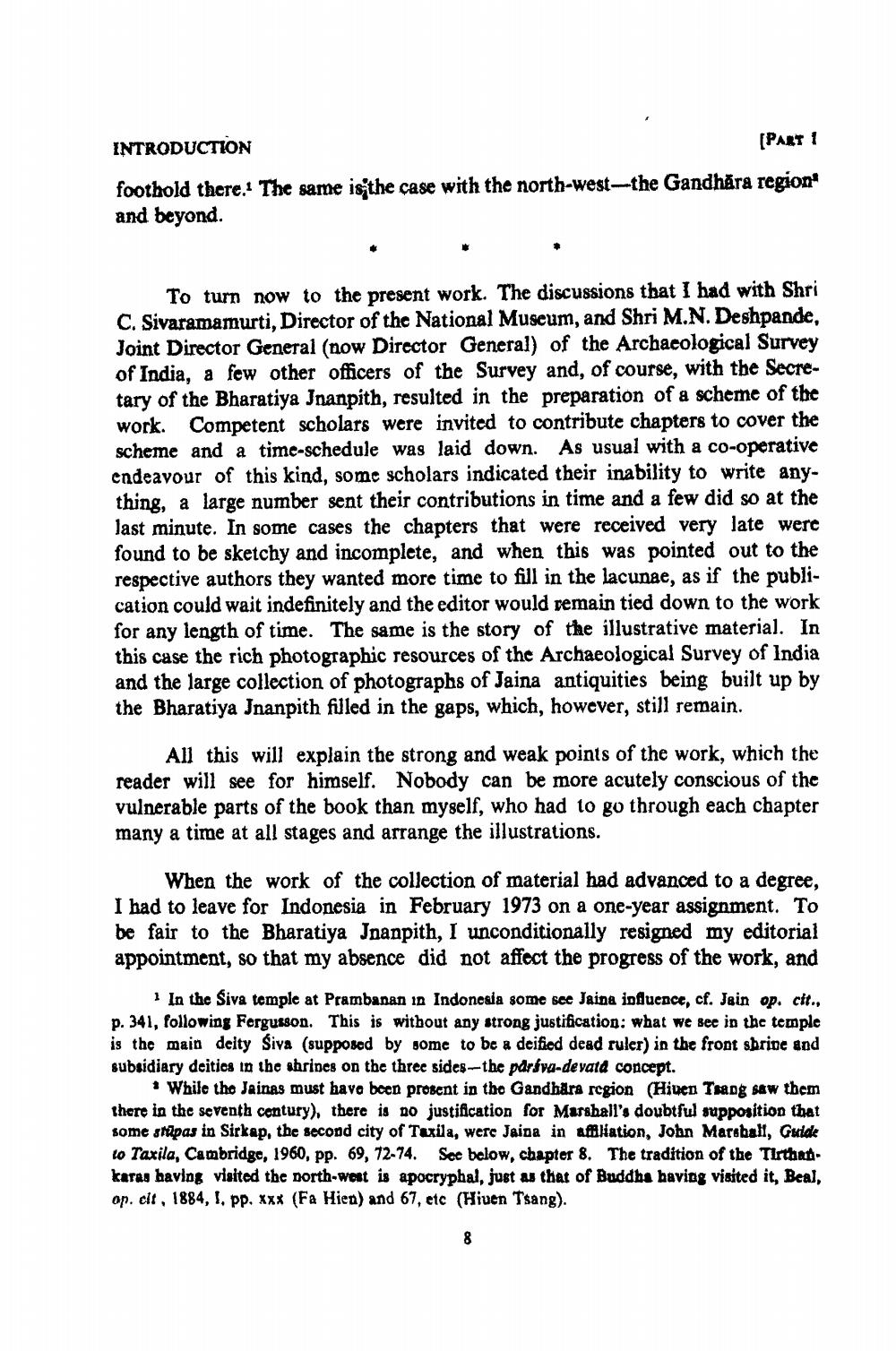________________
INTRODUCTION
(PART 1 foothold there. The same is the case with the north-west--the Gandhăra region and beyond.
To turn now to the present work. The discussions that I had with Shri C. Sivaramamurti, Director of the National Museum, and Shri M.N. Deshpande, Joint Director General (now Director General) of the Archaeological Survey of India, a few other officers of the Survey and, of course, with the Secretary of the Bharatiya Jnanpith, resulted in the preparation of a scheme of the work. Competent scholars were invited to contribute chapters to cover the scheme and a time-schedule was laid down. As usual with a co-operative endeavour of this kind, some scholars indicated their inability to write anything, a large number sent their contributions in time and a few did so at the last minute. In some cases the chapters that were received very late were found to be sketchy and incomplete, and when this was pointed out to the respective authors they wanted more time to fill in the lacunae, as if the publication could wait indefinitely and the editor would remain tied down to the work for any length of time. The same is the story of the illustrative material. In this case the rich photographic resources of the Archaeological Survey of India and the large collection of photographs of Jaina antiquities being built up by the Bharatiya Jnanpith filled in the gaps, which, however, still remain.
All this will explain the strong and weak points of the work, which the reader will see for himself. Nobody can be more acutely conscious of the vulnerable parts of the book than myself, who had to go through each chapter many a time at all stages and arrange the illustrations.
When the work of the collection of material had advanced to a degree, I had to leave for Indonesia in February 1973 on a one-year assignment. To be fair to the Bharatiya Jnanpith, I unconditionally resigned my editorial appointment, so that my absence did not affect the progress of the work, and
1 In the Siva temple at Prambanan in Indonesia some see Jaina influence, cf. Jain op. cit., p. 341, following Fergusson. This is without any strong justification: what we see in the temple is the main deity Siva (supposed by some to be a deified dead ruler) in the front shrine and subsidiary deities in the shrines on the three sides--the pdrtva-devata concept.
• While the Jainas must have been prosent in the Gandbära region (Hiuen Trang saw them there in the seventh century), there is no justification for Marshall's doubtful supposition that some stupas in Sirkap, the second city of Tuila, were Jaisa in affikation, John Marshall, Guldk to Taxila, Cambridge, 1960, pp. 69, 72-74. See below, chapter 8. The tradition of the Tirthatkaras having visited the north-west is apocryphal, just as that of Buddha having visited it, Beal, op. cit, 1884, 1. PP. XXX (Fa Hien) and 67, etc (Hiuen Tsang).




